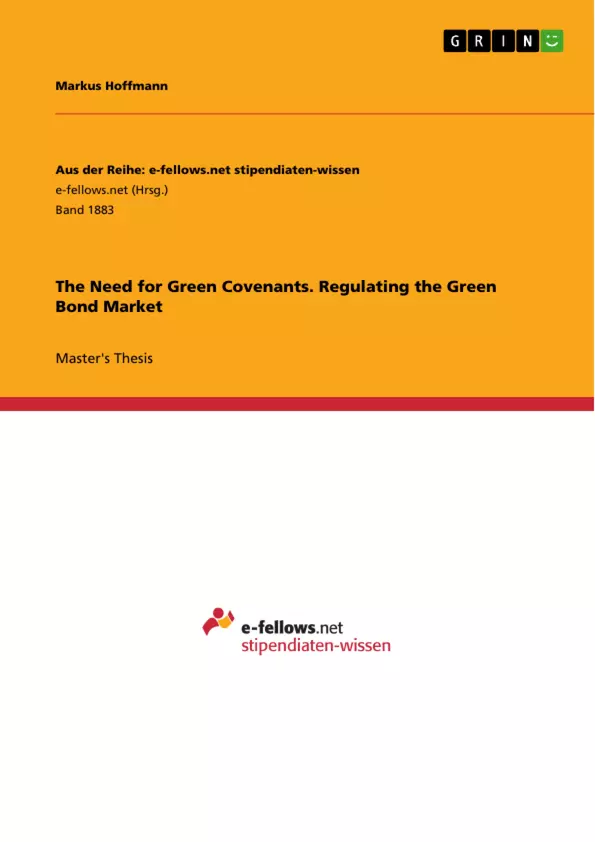Green Bonds are a novel form of long term debt financing instruments enabling continued and sustainable economic growth in a finite physical world. The market for green bonds or Climate Bonds comprises of debt instruments, the proceeds of which are Earmarked for use in environmentally friendly projects. Introduced by the European Investment Bank (EIB) in 2007, the market for green bonds has been growing rapidly, reaching the record volume of USD 36.6 billion in 2014.
Rapidly growing markets offer a myriad of opportunities for investors, but those opportunities come with certain risks attached. The risk addressed by this paper is a twofold one.
Firstly, there is a risk to the environment if the proceeds of earmarked bonds are used for projects that do not actually benefit the environment. Secondly, there is a legal and financial risk to bondholders that arises when issuers of green bonds use funds for purposes other than those set out in the bond indenture.
There are two steps that need to be taken in order to address these risks at the same time. First, a uniform standard of what defines a green bond or a specified range of Shades of Green has to be found and implemented. Second, a green bond needs to state explicitly, in its indenture, what purposes the funds will be used for and of what shade of green those purposes are, in order to empower bondholders to take legal action if covenants are broken. These clauses will be referred to as Green Covenants.
This paper will start by briefly setting out the threat posed by climate change before continuing to introduce green bonds, explaining how they operate and why they will become part of the solution to climate change. Four varieties of green bonds, issued by four very different entities, will then be examined and it will be shown that there are certain shortcomings they all have in common.
This paper goes on by suggesting that these shortcomings can be addressed by introducing stricter and, most importantly, legally enforceable covenants that determine what proceeds of green bonds can be used for. This will be proven by comparing instruments of English Law and United States (US) Federal Law that are currently available to bondholders, with powers a stronger set of covenants will make available to bondholders in the future.
Inhaltsverzeichnis (Table of Contents)
- Introduction
- Green Bonds - a Novel Instrument to address Climate Change
- Connecting Finance and the Environment
- Operation of a Green Bond
- World Bank Green Bonds
- Clean Renewable Energy Bonds
- Transport for London
- NRG Yield, Inc.
- Introducing Green Covenants
- Determining the Shade of Green
- The Need for Green Covenants
- Simple Enforceability of Green Covenants
- Why are Green Covenants Necessary?
- Operation of Green Covenants in Comparison with Common Law Instruments
- Fiduciary Duties
- Fraudulent Misrepresentation and Securities Fraud
- Quistclose Trusts
- Green Covenants as a Superior Solution
Zielsetzung und Themenschwerpunkte (Objectives and Key Themes)
This paper examines the emerging market for green bonds, highlighting their potential to bridge the gap between financial markets and environmental sustainability. It explores the challenges associated with ensuring that green bond proceeds are genuinely used for environmentally friendly projects and proposes the implementation of "Green Covenants" as a solution.
- The growing importance of green bonds in addressing climate change.
- The need for a standardized definition and measurement of "green" projects.
- The role of legally enforceable covenants in ensuring the integrity of green bond investments.
- The comparative analysis of existing legal instruments and their effectiveness in protecting bondholders.
- The potential benefits of Green Covenants in promoting responsible and transparent green bond issuance.
Zusammenfassung der Kapitel (Chapter Summaries)
The paper begins by introducing the concept of green bonds and their role in tackling climate change. It explores the rapid growth of the green bond market and the associated risks, both for the environment and for bondholders. The paper then introduces the concept of Green Covenants, emphasizing their importance in ensuring the integrity of green bond investments.
Chapter 2 delves into the operation of green bonds, providing examples from various entities, including the World Bank, Clean Renewable Energy Bonds, Transport for London, and NRG Yield, Inc. It highlights the shortcomings common to these bonds, which can be addressed by implementing Green Covenants.
Chapter 3 further explores the need for Green Covenants, discussing the challenges of defining "green" projects and the importance of legal enforceability. It provides a rationale for why Green Covenants are necessary to protect both the environment and the interests of bondholders.
Chapter 4 compares the effectiveness of existing legal instruments, such as fiduciary duties, fraudulent misrepresentation, and Quistclose trusts, in safeguarding bondholders' interests. It argues that Green Covenants offer a superior solution by providing a stronger legal framework for ensuring that bond proceeds are used for their intended purpose.
Schlüsselwörter (Keywords)
Green bonds, climate change, environmental sustainability, Green Covenants, legal enforceability, fiduciary duties, fraudulent misrepresentation, Quistclose trusts, bondholders, environmental protection, financial markets, sustainable finance.
- Citar trabajo
- Markus Hoffmann (Autor), 2015, The Need for Green Covenants. Regulating the Green Bond Market, Múnich, GRIN Verlag, https://www.grin.com/document/335306



